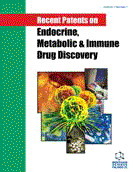Abstract
Diabetes mellitus (DM) is a metabolic disorder in the endocrine system resulting from a defect in insulin secretion, insulin action or both of them. Adverse side effects of chemical drugs for treatment of diabetes persuaded the using of medical plants. Cherry as a traditionally used plant for treatment of diabetes, is packed with powerful plant pigments called anthocyanins. They give cherries their dark red color and are one of the richest antioxidant sources which lower the blood sugar and bear other beneficial health effects. The purpose of this study is to evaluate the effect of ethanolic extract of cherry fruit on alloxan induced diabetic rats. In this study 36 Male Wistar rats, body weight of 150-200gr were divided into 6 groups. Diabetes was induced by intra peritoneal injection of 120 mg/kg Alloxan. The duration of the cherries treatment was 30 days in which single dose of extracts (200mg/kg) were oral administered to diabetic rats. Blood glucose levels were estimated with glucometer before treatment, 2h and 1- 4 weeks after administration of extracts. Treatment with extracts of the cherries resulted in a significant reduction in blood glucose and urinary microalbumin and an increase in the creatinine secretion level in urea. Extract of this plant is useful in controlling the blood glucose level. Cherries appear to aid in diabetes control and diminution of the complications of the disease. Some relevant patents are also outlined in this article.
Keywords: Anthocyanin, anti-diabetic activity, blood glucose, cherries, creatinine, diabetic rats, microalbumin, Hyperglycemia, triglycerides, nephropathy
 34
34





















